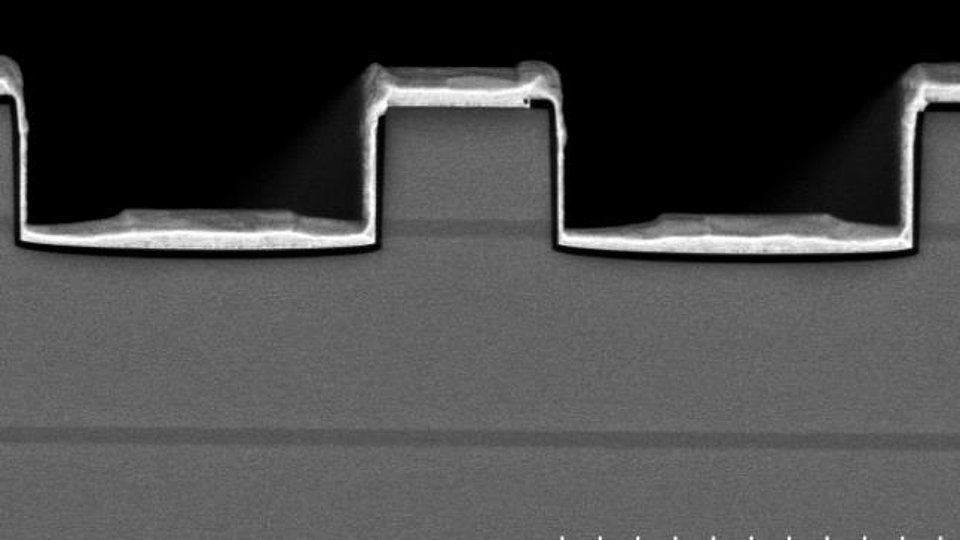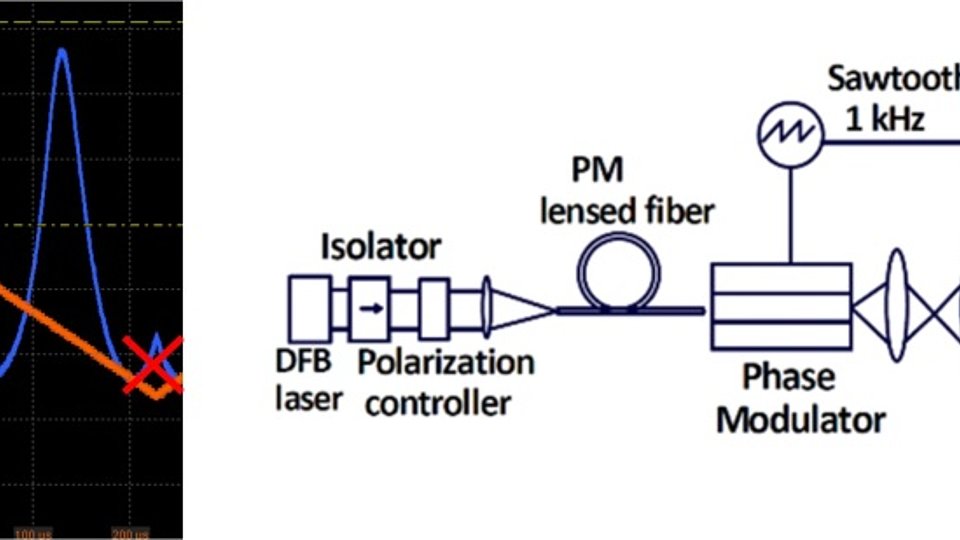780 nm phase modulators based on GaAs – an alternative to crystal-based modulators
The development of photonic devices for atomic spectroscopy applications at the wavelength of 780 nm has recently gained increasing attention. Phase modulators are central building blocks in these devices. Integrating them into hybrid laser and spectroscopy modules leads to very compact and robust systems. III-V compound semiconductors are highly compatible with existing electronics, which makes the realization of phase modulators based on GaAs/AlGaAs double heterostructures very attractive.
The FBH has developed a phase modulator based on an AlGaAs heterostructure, which is grown on a (001) GaAs substrate, forming a W-waveguide with very low optical losses (1.4 dB/cm). This makes it possible to realize long devices. Lateral optical confinement is provided by a ridge waveguide perpendicular to the [110] crystallographic direction in order to make use of the linear electro-optical (LEO) effect.
Fig. 1 shows a cross-sectional scanning electron microscope picture of the fabricated phase modulator. The epitaxial layer structure of the P-p-n-N W-shape waveguide was grown on a 3-inch (001) n-GaAs substrate using metal-organic vapor phase epitaxy (MOVPE). Si and C were used as n- and p-type dopants, respectively. For the modulator under investigation, Al0.35Ga0.65As was selected for the waveguide core with a band gap energy of 1.90 eV, which is sufficiently larger than the photon energy of 1.59 eV.
The ridge waveguides were defined by reactive ion etching (RIE) and encapsulated with a 100 nm thick SiNx layer. The isolation layer was opened on top of the waveguides for lateral carrier confinement. Ti/Pt/Au layers were deposited for p-side contacts, and before evaporating the n-metallization the wafer was thinned to 150 µm.
The modulation efficiency measured using the Fabry-Perot (FP) interference method (see Fig. 2) was 16°/(V ∙ mm). The total modulator capacitance was estimated to be 250 pF at 0 V, limiting direct modulation with a 50 Ω source to 13 MHz. The capacitance of the modulator can be reduced by one to two orders of magnitude by means of adding a benzocyclobutene polymer (BCB) passivation layer between the p-metallization and the upper cladding instead of the thin SiNx layer. This should increase the modulation bandwidth beyond 1 GHz with direct driving. As a result, GaAs/AlGaAs-based phase modulators are well-suited to become a compact and robust alternative for crystal-based modulators.
Publication:
B. Arar, H. Wenzel, R. Güther, O. Brox, A. Maaßdorf, A. Wicht, G. Erbert, M. Weyers, G. Tränkle, H.N.J. Fernando, A. Peters, "Double-heterostructure ridge-waveguide GaAs/AlGaAs phase modulator for 780 nm lasers", Appl. Phys. B, vol. 116, no. 1, pp. 175-181 (2014).
FBH research: 28.01.2014

